.jpg)
.jpg)
Senegal Offshore
South Dakar Offshore
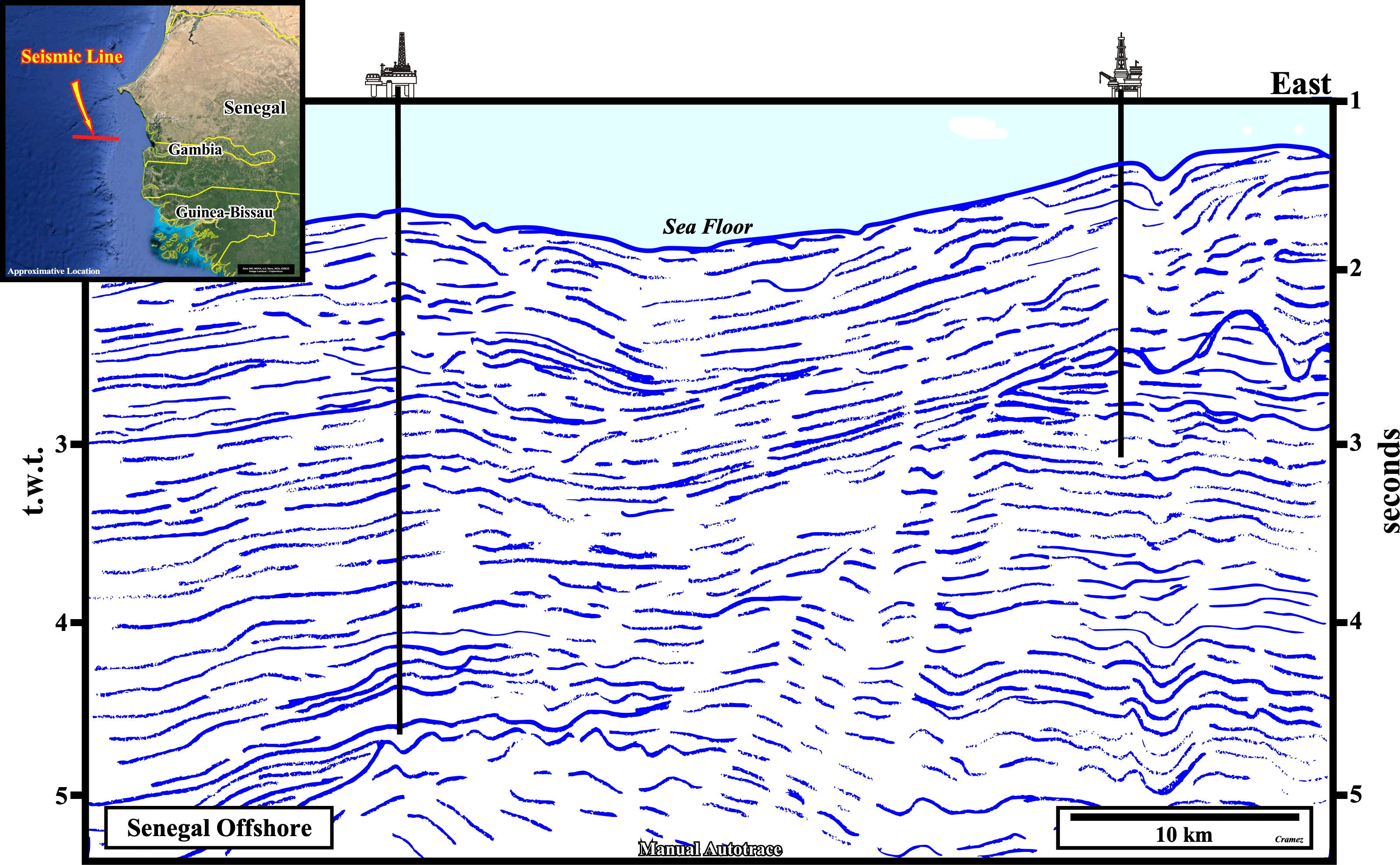
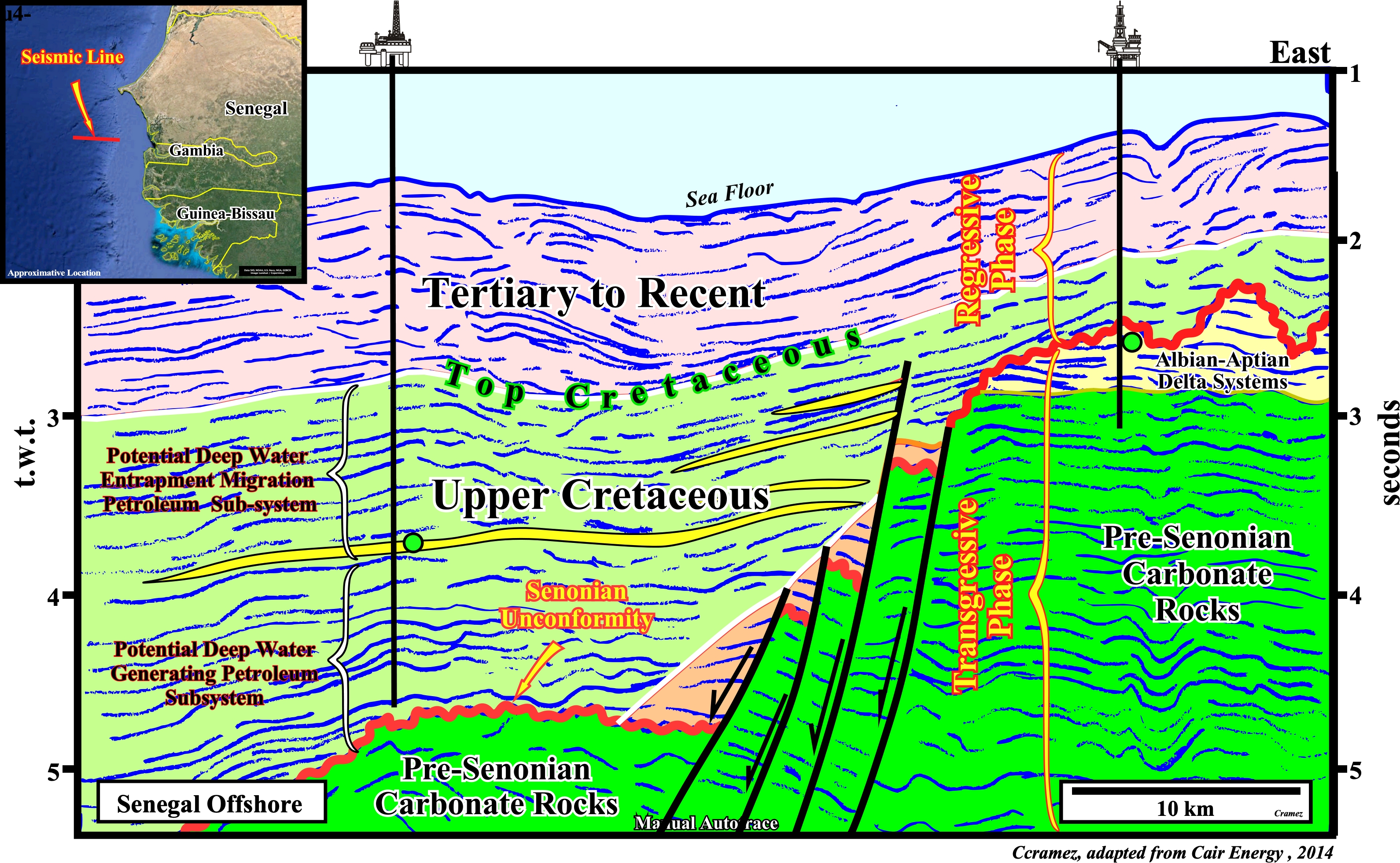
This tentative geological interpretation of a manual autotrace of a seismic line of the southern Senegal offshore (southward of Dakar) illustrates not only the morphology of the Senonian unconformity, but how the Senonian relative uplift developed a deepwater petroleum system as well (for an European geoscientist the Senonian is the final Cretaceous epoch which is the dated by Harland et al., 1989, at 88.5-65 Ma, comprising the Coniacian, Santonian, Campanian). The source rocks (generating petroleum sub-system) of this deepwater petroleum systems are Upper Cretaceous : deep water shales. The reservoir rocks are in submarine basins and slope fans and the traps are, mainly, morphological, since the geometry of the reservoirs (top) and the sealing rock are quite different. In the deep parts of the basin, the Senonian unconformity, matches with the maximum flooding surface (MFS. 91.5 Ma, i.e., Cenomanian-Turonian). Locally, the Senonian unconformity can be enhanced by a salt induced faulting (normal faulting). It underlies an abrupt deep water setting (sharp platform-slope change). An important erosion associated with the relative sea level fall, induced by the Senonian uplift, takes place on the shelf creating potential morphological traps in the Albian-Aptian delta systems. A petroleum systems seem to exist between Mauritania and Guinea offshores, including Gambia and Guinea-Bissau. In fact, the abrupt deep water geological setting, as illustrated in the block diagram below, is found all along these offshores.
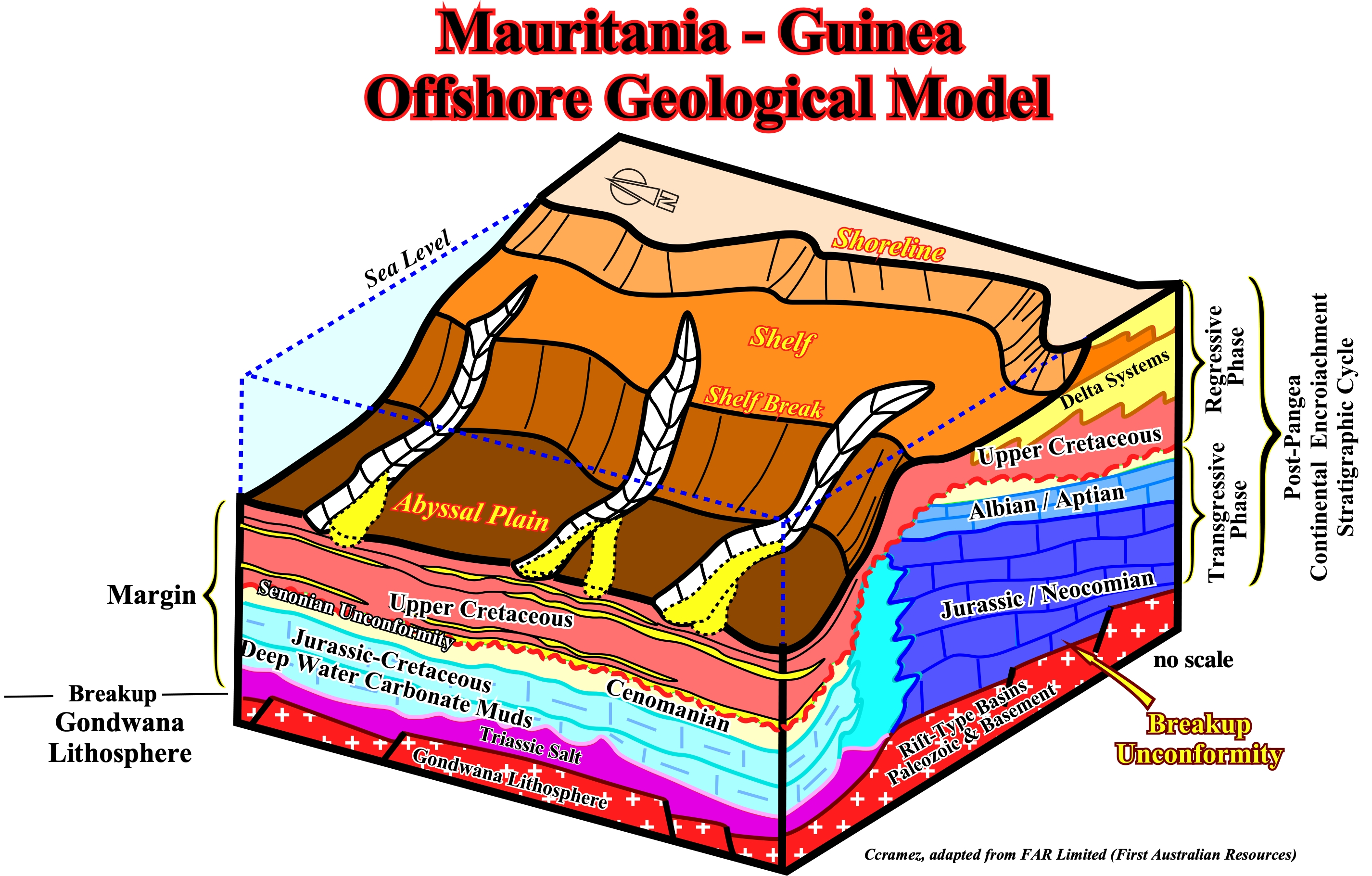
This block diagram illustrates the geological configuration of the post Pangea continental encroachment stratigraphic cycle in the Mauritania-Guinea offshore. Above the breakup unconformity, which is the upper boundary of the pre-rifting and rift-type basin rocks, a Triassic salt layer was deposited in a confined shallow water depocenter, apparently, from potash enriched brines due to the spilitization of sub-aerial volcanism (lava-flows, i.e., SDRs). Then, due to absolute sea level rise induced by the volume reduction of the oceanic basins created by the emplacement of the oceanic ridge, carbonate sediments of the transgressive retrogradational phase were deposited. During this stratigraphic phase, the shoreline was, progressively, displaced landward, while the successive shelf breaks were, more or less, stacked in a still-stand position (strong upbuilding) creating an abrupt deep water geological setting, i.e., an abrupt change between the shelf and the abyssal plain environments with a quite steep continental slope. Since the absolute sea level started to fall, due to the volume reduction of the oceanic basins induced by the subduction of the oceanic crust along the subduction zones and the continental collision, i.e., during the regressive phase of the post-Pangea continental encroachment stratigraphic cycle, submarine basin and slope fans deposited in the deeper parts of the basin. Potential turbidite depositional systems may form excellent entrapment-migration petroleum sub-systems, which can be feed by potential deep-water source rocks intervals.
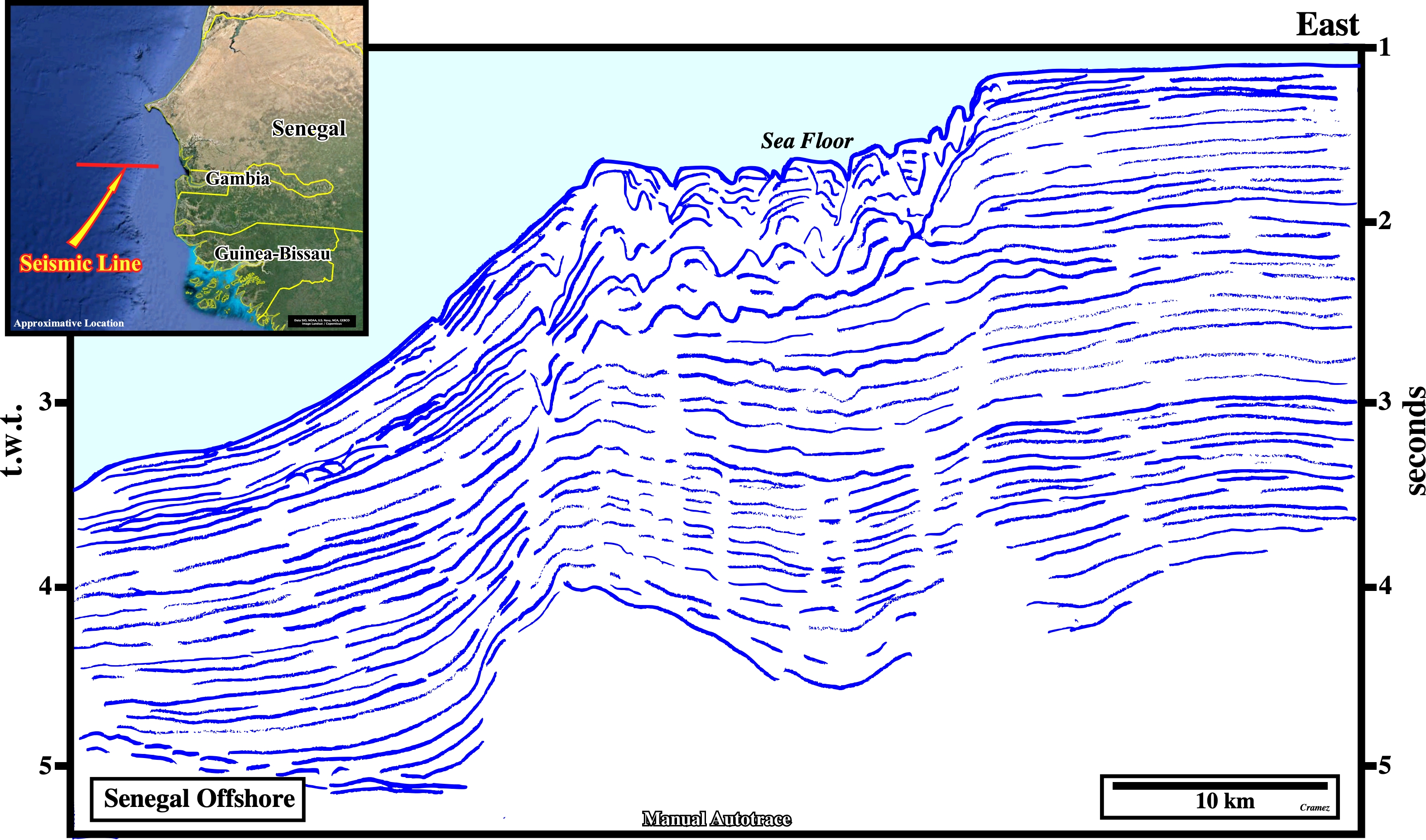
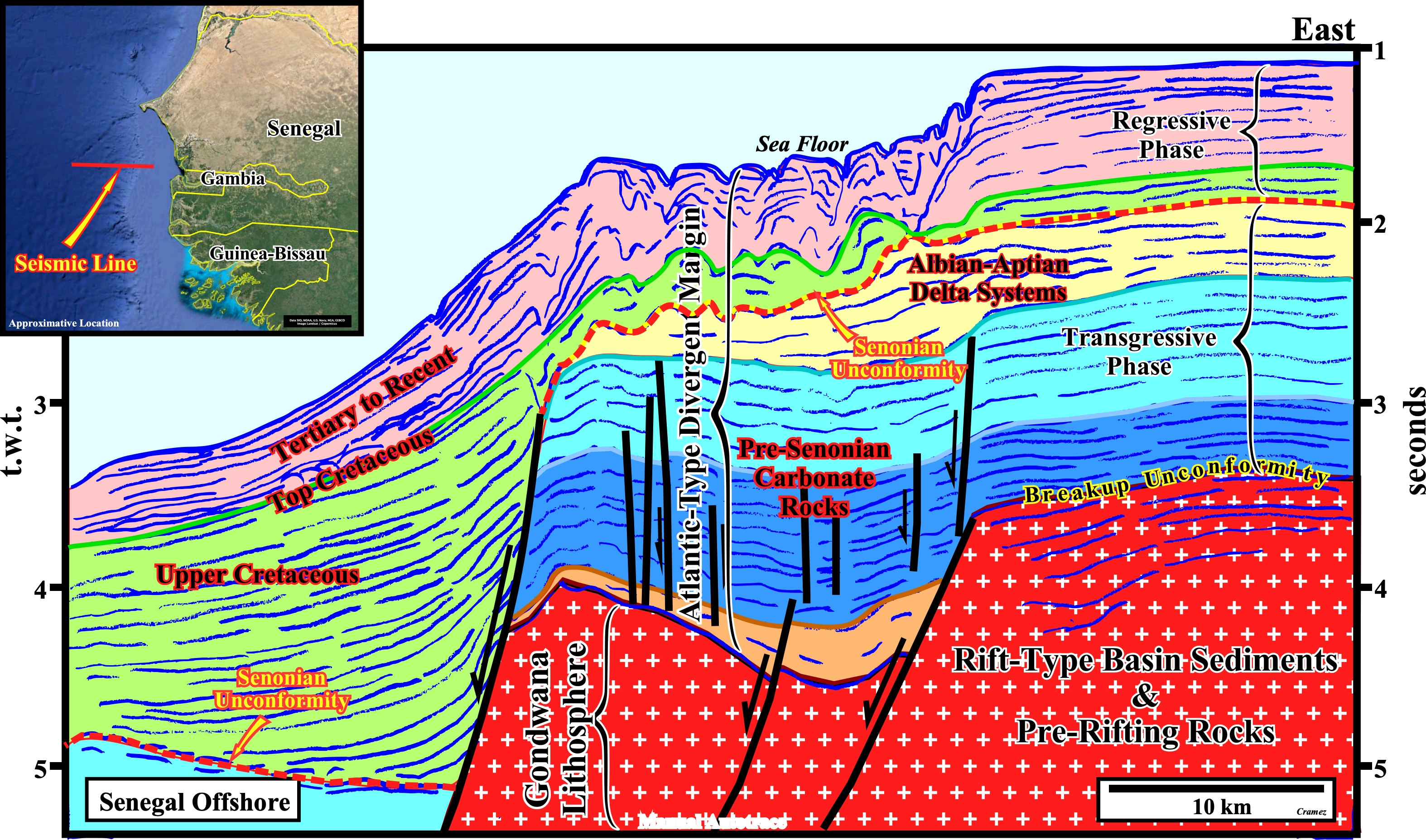
On this manual autotrace of the Senegal offshore, we find, easily, the abrupt geological setting, which was predominant during the Cretaceous time. Similarly, the breakup unconformity is, quite, obvious. It separate the sediments deposited during the post-Pangea continental encroachment stratigraphic cycle from the Gondwana rocks, particularly, the lengthening (thinning) and highly volcanic injected area, in which the rift-type basins developed. The retrogradational transgressive phase of the continental encroachment cycle is individualized from the progradational regressive phase by a maximum flooding surface that, locally, can coincide with the Senonian unconformity.
Send E-mails to carlos.cramez@bluewin.ch with comments and suggestions to improve this atlas.
Copyright © 2001 CCramez
Last update:
2022